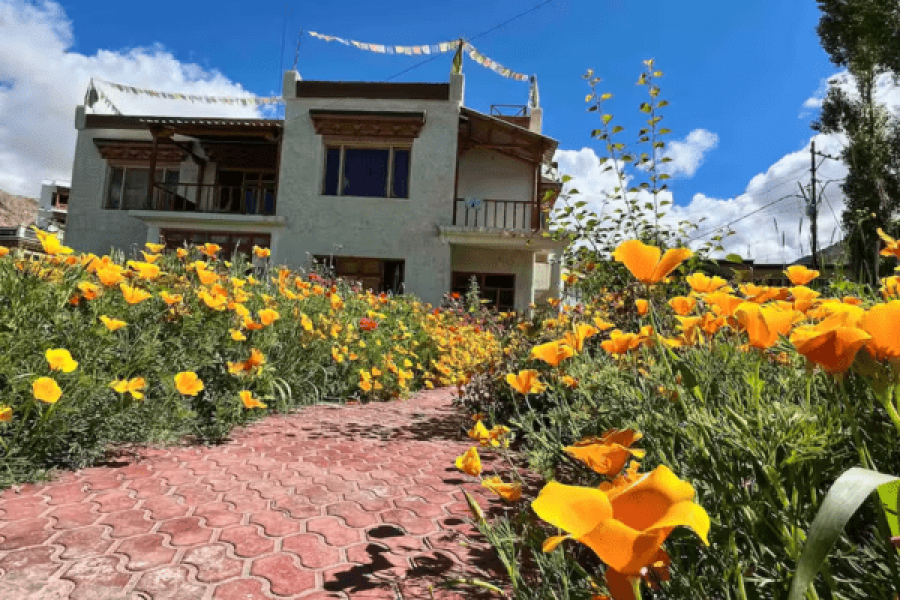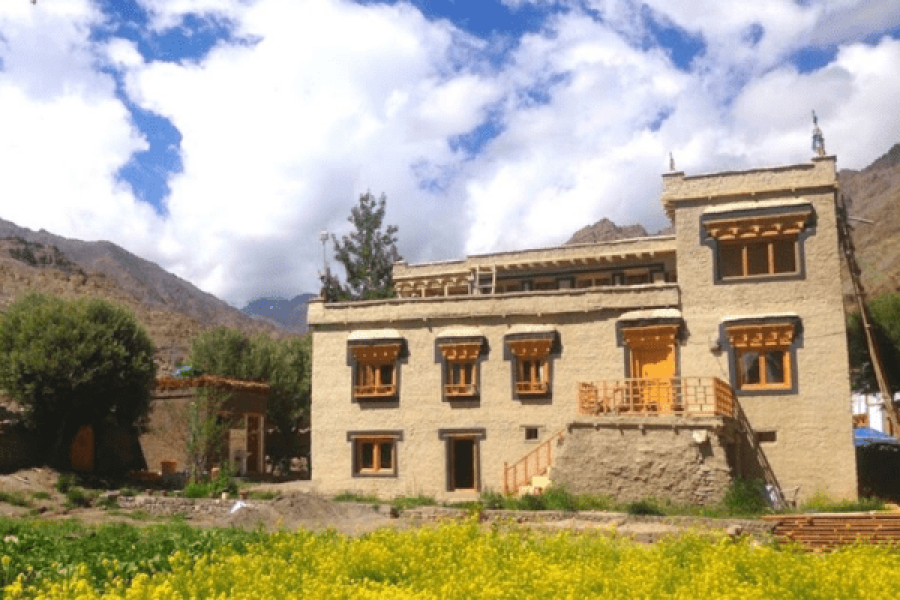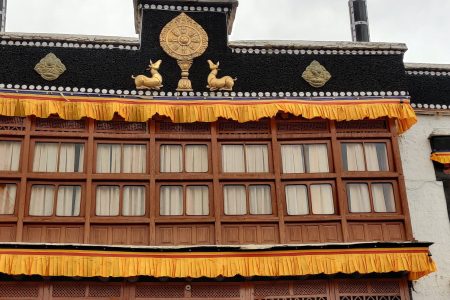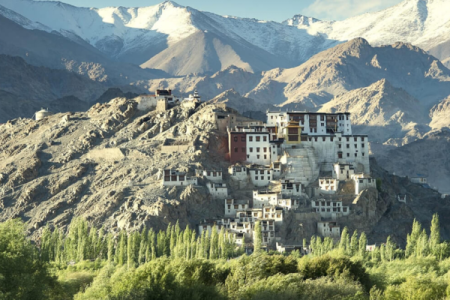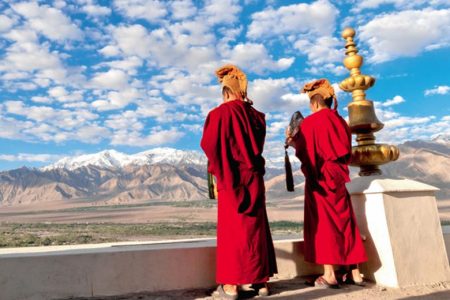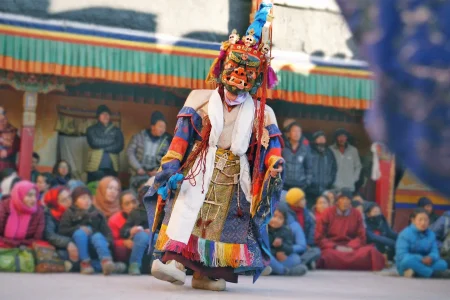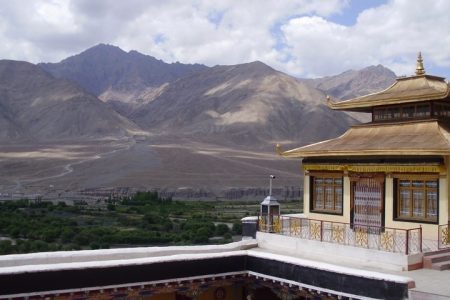Spituk Monastery is an excellent example of traditional Tibetan Buddhist architecture with its unique layout, colors, and structures. The monastery is known for its simple yet majestic design that blends with the rugged natural landscape.
- Main Assembly Hall (Dukhang)
- The main hall, known as Dukhang, is the heart of the monastery. Inside the assembly hall, you’ll find large murals depicting scenes from Buddhist teachings and the life of the Buddha. The room is often used for prayers, ceremonial activities, and gatherings of the monastic community.
- Statue of Buddha: A large statue of Buddha sits at the center of the hall, where monks and visitors gather to meditate and participate in ceremonies.
- The Prayer Rooms and Stupas
- Spituk has several smaller prayer rooms and chapels, each dedicated to different Buddhist deities. These rooms contain manuscripts, thangkas, and statues.
- The monastery also has a small stupa or chorten within its premises, which is an important element of the Buddhist faith.
- Fort-like Structure
- The monastery is built in a fortified style, with a combination of stone, wood, and mud. The structure provides a sense of security and protection, much like other monasteries in the region.
- Its position on a hilltop also signifies its dominance over the surrounding Indus Valley, giving it both spiritual and strategic importance.
- Roof and Viewpoints
- One of the most remarkable features of Spituk Monastery is its roof, which offers one of the most stunning views of Leh town, the Indus River, and the Himalayan ranges. The terraces and rooftops offer an excellent vantage point to photograph the surrounding landscape.
Spituk Monastery is also renowned for its annual religious festivals, which draw large crowds from across Ladakh and beyond.
- SpitukGustor Festival
- Held annually in January/February: The SpitukGustor Festival is one of the biggest festivals in Ladakh, celebrated with much fanfare in the monastery. It is a masked dance festival where monks perform traditional Buddhist dances (called Cham dances) to the rhythm of drums and cymbals.
- The festival is a significant religious event for the locals, marking the victory of good over evil and bringing blessings for the upcoming year.
- Rituals: The Kali deity is believed to be the protector of the monastery and is ceremonially worshipped during the festival. Devotees also offer prayers and light butter lamps for prosperity and peace.
- Other Ceremonial Events
- Throughout the year, Spituk hosts various prayer ceremonies, meditation retreats, and teachings by spiritual leaders. Many of these ceremonies coincide with the important Tibetan Buddhist festivals such as Losar (Tibetan New Year), Saka Dawa, and Tsechu.


